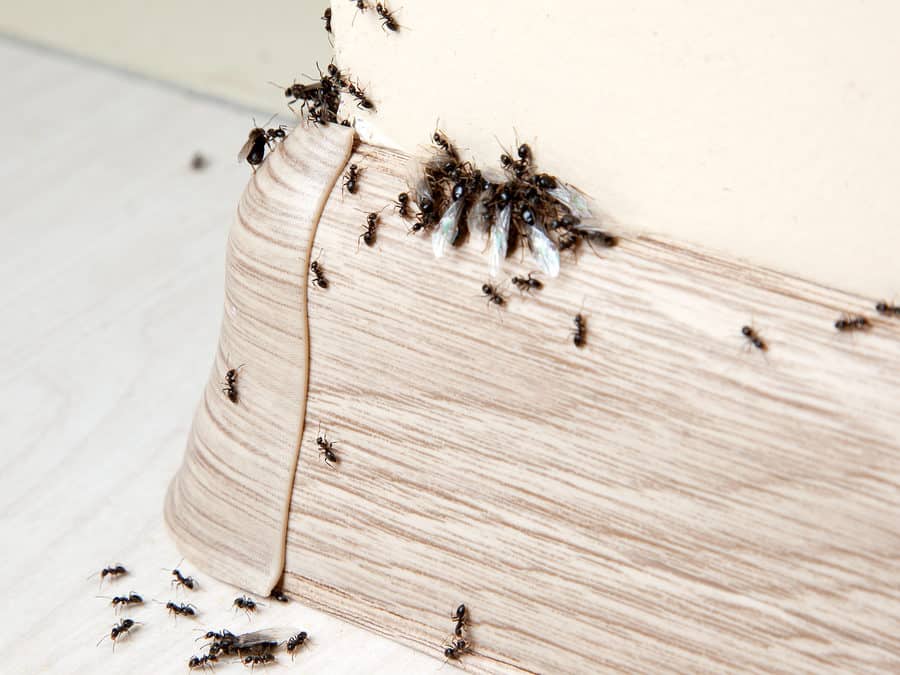Ants are the #1 nuisance pest in America. They are one of the most challenging pests to control, along with bed bugs, because their colonies can number in the 1000s. Ants are considered commercial pests because they like to live close to people and eat the same things that we do. Ants can be seasonal pests or a year-round problem depending on the species. They will often enter our homes in the warmer months of the year in search of water and food. Most species, including fire ants and odorous house ants, will build their nests outdoors and come inside in search of food that they will collect and take back to their colonies. Other species like carpenter ants will actually make their way into your home and build their nests indoors. Ants are often found near food sources, moisture, and in hidden areas where they have protection and concealment such as wall voids, under floors, behind window frames, and under appliances. Ants in the bathroom and ants in the kitchen are the two most common scenarios when these pests make their way into your home, although they can be found in other rooms, as well.
Regardless of the species, when ants become a problem in your home it is often necessary to use a professional pest control company to help get them under control. Here are some important aspects to any successful ant control program:
1. Proper Identification
One of the most important components to any ant control program is to properly identify the species of ant you are dealing with. Different species have different behaviors, prefer different environments, and have different diets so treatment will vary greatly between them. It is important to know where to find them and how to treat them to ensure success in eliminating and controlling them.
2. Eliminate Food Sources
One of the main reasons ants come into your home is in search of food to take back to their colony. Eliminating things that attract them can help keep them from taking over your home. Clean up any food crumbs from kitchen floors and countertops and wipe them down frequently. Clean your appliances regularly. Empty your trash routinely and wipe the cans down. Clean outdoor grills and remove crumbs from tables, decks, and patios after each use. Keep foods, including pet food, in sealed containers. Place a bay leaf in canisters of dry food (such as flour) as the scent repels ants and other pantry pests. Rinse any empty containers before placing them in recycling bins. Get rid of any overripe fruit as this will attract ants, as well.
3. Eliminate Moisture
Ants need moisture to survive. Eliminating or reducing the moisture in your home can help prevent ants from coming inside. Repair any leaks around pipes and in your roof. Check gutters to make sure they are not clogged and ensure downspouts are directing rainwater away from foundations. Consider installing gutter guards to help prevent clogs. Thoroughly clean bathrooms with disinfectant cleaners and make sure shampoo, conditioner, and soap bottles are closed tightly and don’t have any leaks.
4. Eliminate Points of Entry
In order to get into your home, ants have to have a way inside. It is important to identify where they are gaining entry into your home to successfully control and eliminate them. Carefully inspect the exterior of your home and seal any holes, gaps, and cracks especially around areas where pipes and wires enter your home. Trim back shrubs and tree branches so they are not touching the sides or roof of your home. Keep mulch and timber at least 2 feet from your foundation. Move debris such as firewood, rock piles, boards, etc away from your home. Remove any tree stumps, fallen tree branches and logs from your yard. Repair any holes in window and door screens and replace weatherstripping.
As always, if you suspect you have an ant problem, contact a professional ant control company who can help you properly identify the species of ant you have and set you up with a thorough and comprehensive treatment and control plan.

